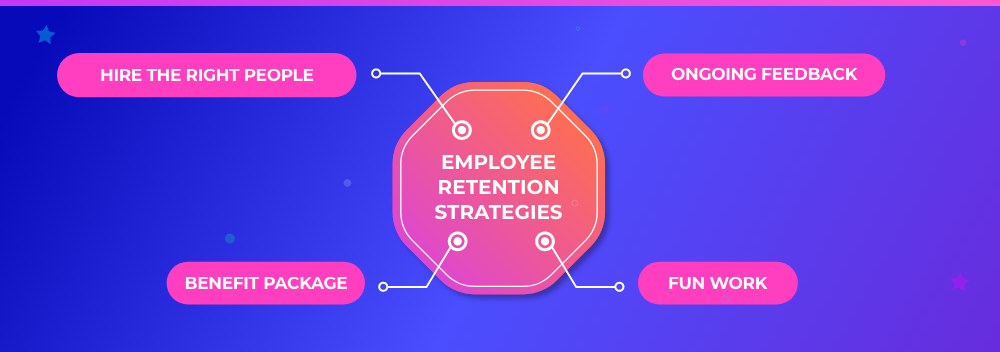Employee Turnover Rate and Everything You Should Know
Written by María Eugenia Raffaele
The turnover rate is the total percentage of employees that leave the organization over a specific period of time due to any unforeseen circumstances. Moreover, organizations usually include retirement, dismissals or voluntary resignation as well in their turnover rate. Other than that, organizations prevent the inclusion of promotions and transfers in their turnover rate. Every organization, even the most successful ones, experience a degree of turnover. It is an issue managers have to keep track, as major turnover can be costly.
Replacing an employee requires time and money. It’s a whole new job in itself. You need to re-start the hiring process, from recruiting, conducting interviews, to training. To avoid this issue organizations keep a solid track of the employee turnover rate.
The most important thing to do to prevent a massive turnover is to understand and determine the reason why employees are leaving the company. The best way to learn this is by conducting exit interviews. Most big organizations around the world have this practice of doing exit interviews before an employee leaves to learn about the reason why they are resigning and find the root cause. With these interviews you will be able to obtain a great deal of data, which you can share with the leadership to find solutions to solve the issues causing the turnover. Another way to gather data about the employee turnover is to continuously collect feedback from the current team by doing an employment engagement survey or a pulse survey to have a better understanding of the reasons behind resignations.
In order to calculate the turnover rate, you have to know the number of employees that have resigned your company, and divide this number by the average number of individuals over that specific time period, finally, multiply it by 100 in order to get the rate.
Most organizations calculate the annual turnover rate rather than the monthly turnover because it gives them a clearer idea about the lost employees on a larger scale. And also some smaller businesses take time to have a large number to show meaningful patterns.
The difference between Employee Turnover and Employee Attrition
Both- employee attrition and employee turnover – are almost identical, that is, the total employees that leave or are made to leave an organization. However, the difference resides in that when an employee turnover occurs, the company will do all that must be done to fill the void and hire someone in that vacant position. But when attrition occurs, the vacancy is not filled, because the organization decides to leave the vacancy unfilled or eliminates the job role.
The Importance of Cutting Down The Employee Turnover Rate

For small businesses, a high employee turnover rate can cost a lot. When an employee resigns from the organization for any specific reason he/she leaves a vacant position, which needs to be filled. In order to fill that vacancy and keep the organization running you need to invest more money and time that is why every employee is equally important to the organization not only key personnel.
If a company loses an important employee or the employee left an important position then the organization will need to get on the track to fill the position. The expenses for finding a new candidate can be costly. It includes advertising, recruitment, interviewing candidates, etc.
The loss of an employee will incur other costs as remaining employees may be faced with having to do overtime to complete the tasks of the one that has left. It may affect the productivity of the employees.
An increased rate of turnover may also impact the morale of the department, eventually the organization as a whole. They may start feeling overloaded by the amount of work which may result in stress and loss of productivity eventually. Organization that face have a higher turnover rate can be negatively impacted it may affect the work space and the future of the company in the long term.

Some Secure Employee Retention Strategies
No organization is exempt from employee turnover. Even the most profitable and high ranking organizations, experience their fair share of employee attrition. This in no way means that controlling or preventing turnover is the answer. It is not, unless you play it safe and make some necessary moves. It will always be in the best interest of the Human Resource department to make sure that the turnover rate is as minimum as almost being identical to non existent. The goal would be to reduce it, or better yet, eradicate it completely. However, there are some extremely free and inexpensive methods to convince people to stick around.
1. Hire The Right People
Check if the person you are hiring fits well with the culture of your business. The employees you hire must be culturally fit for the position as well as for the organization.
2. Offer a Comprehensive Benefit Package Right From The Start
In order to prevent an unwanted employee turnover rate, offer a competitive and an extremely comprehensive benefit package with substantial components like health benefits, life insurance, disability insurance, and flexible hours.
3. Make Work Fun
Create an atmosphere where your employees can enjoy their work. Make sure that the environment of the office is light and friendly.
4. Offer Ongoing Performance Feedback
The recognition of the employee contributions is the most powerful way of reinforcing the employees and likewise, ensuring their retention.

Conclusion
Having a high turnover rate can be something really daunting for any organization and it is in their best interest to reduce the turnover rate that erupts every year. Luckily there are multiple free and economical ways to convince your employees to stay around. The trick is to hire the right people, praise them, offer substantial pay and benefits, allow flexibility, show them that there are opportunities for a successful career path and the ideal workplace environment. However, one thing is inevitable and be prepared that, completely eliminating the turnover of the employees is impossible, but it can be reduced to the lowest rate. To obtain help for calculating all the important metrics including the turnover rate, StarMeUp is your one stop platform that will solve all your HR related issues. Browse through our website to learn more.